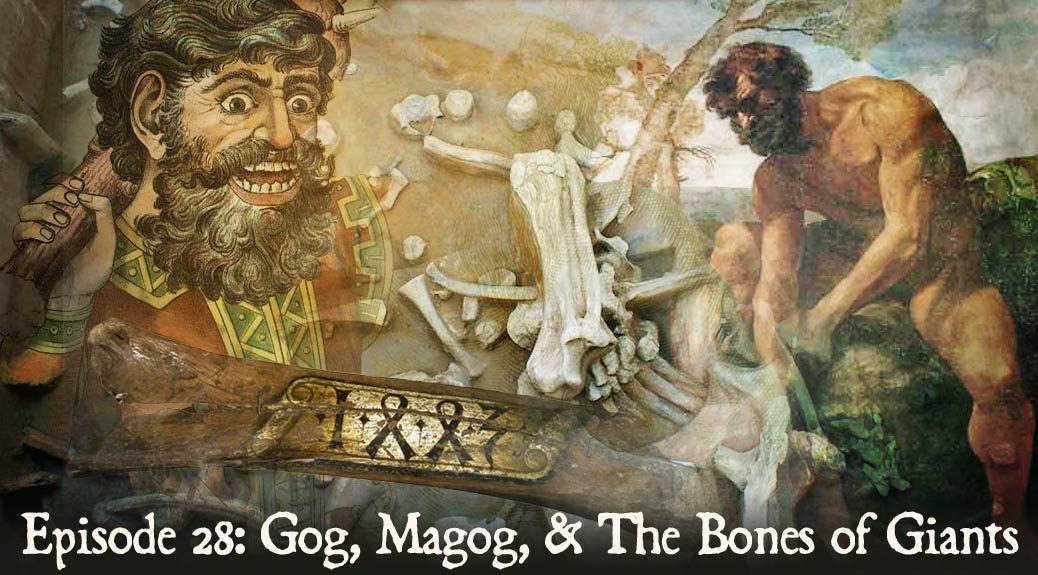
#28 Gog, Magog, and the Bones of Giants
Podcast: Play in new window | Download (Duration: 42:42 — 39.1MB)
Subscribe: Apple Podcasts | Spotify | Android | Podchaser | RSS | More
This time we look at the myths of British giants Gog and Magog, and a belief in biblical giants seemingly confirmed by giant bones dug from the earth.
We begin with a 1953 newsreel welcoming reconstructed figures of Gog and Magog back to the London Guildhall after the Nazi bombing of the city destroyed the originals. While Londoners may know the figures as those paraded in the Lord Mayor’s show each November, we also look at a more American perspective on Gog and Magog as figures representing nations allied with the Antichrist from the biblical book of Revelation.
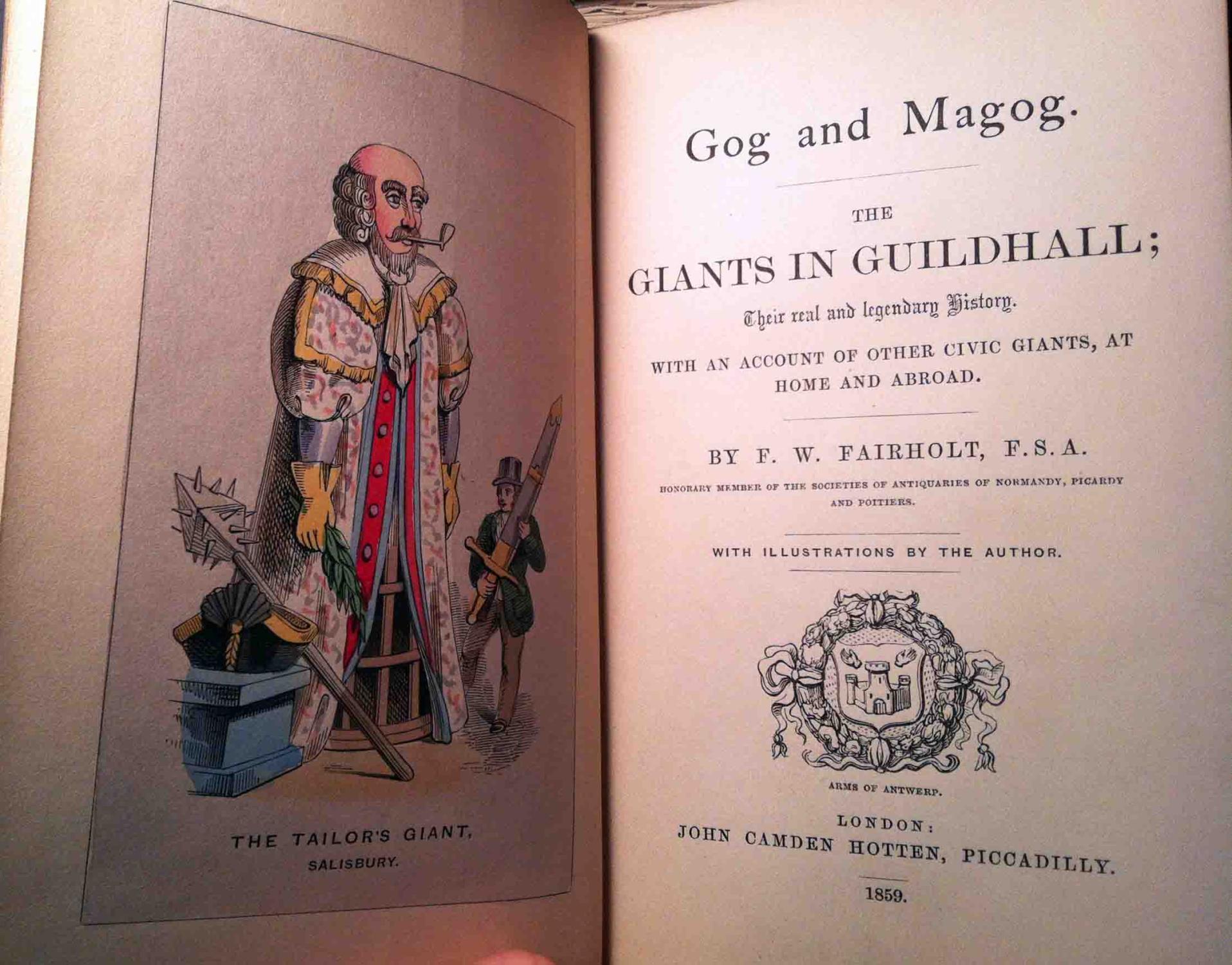
Our next stop in the Bible is a verse from Genesis Chapter 6, speaking of “giants in the earth in those days,” (before the Flood). The word “giant,” we learn, was chosen to translate the Hebrew “Nephilim.” Our Genesis passage suggests the Nephilim are the offspring of angels mating with human women, and this notion is reinforced by apocryphal texts, such as the Book of Enoch, which dubs these fallen angels “Watchers.” We hear a snippet featuring kindly Watchers from Darren Aronofsky’s 2014 film, Noah, which whitewashes the traditional understandings of the Watchers.
The word, “Nephilim,” we learn, literally means “fallen ones,” (“fallen” as in divine beings tainted by human hybridization.) The suggestion that they are physically large comes from another Genesis story in which Moses sends spies to the land of Canaan in preparation for a Hebrew invasion and receives a report on “Nephilim” who in size compare to men as men do to grasshoppers. We also hear some amusing stories of the biblical King Og, whose 13-foot bed is mentioned in the book of Deuteronomy.
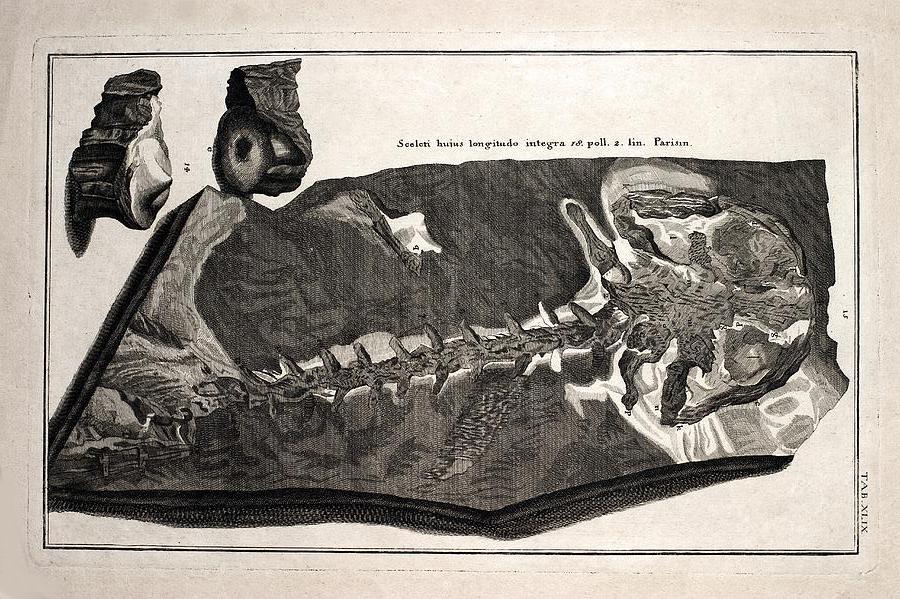
Next follows a quick survey of the bones of prehistoric animals mistaken for the bones of biblical Nephilim (or St. Christopher, who was also believed to be a giant from the land of Canaan). Bones of mastodons figures prominently as do the teeth of St. Christopher, though holy relics produces from beached whales and deceased hippopotami are also mentioned. We also learn of the patron saint of hares, St. Melangell (also somehow gifted with oversized bones) a dinosaur named after the human scrotum, and a prehistoric species of giant salamander mistaken for one of the Nephilim by 18th century naturalist Jakob Scheuchzeri, who figures into the early science fiction novel War of the Newts (represented with a snippet from a 2005 BBC radio drama). The hoaxed 12th-century discovery of a gigantic skeleton of King Arthur at Glastonbury is also discussed.
We learn that Arthur turns out to be connected to the Cornish folktale of that murderous scamp “Jack the Giant Killer.” Referring to an 18th-century text, we run through the grisly episodes of this story (including a long-forgotten one including a female follower of Lucifer). Not only does the original tale see Jack inducted to Arthur’s Round Table, but it seems the Cornish story is a retelling of a similar Arthurian story of the king slaying a giant on Mont Saint Michel in Normandy. A strangely mirrored version of this site, St. Michael’s Mount in Cornwall also was said to be home to a giant named Corineus, a figure that seems to be related to Cormoran, the first giant killed in “Jack the Giant Killer.”
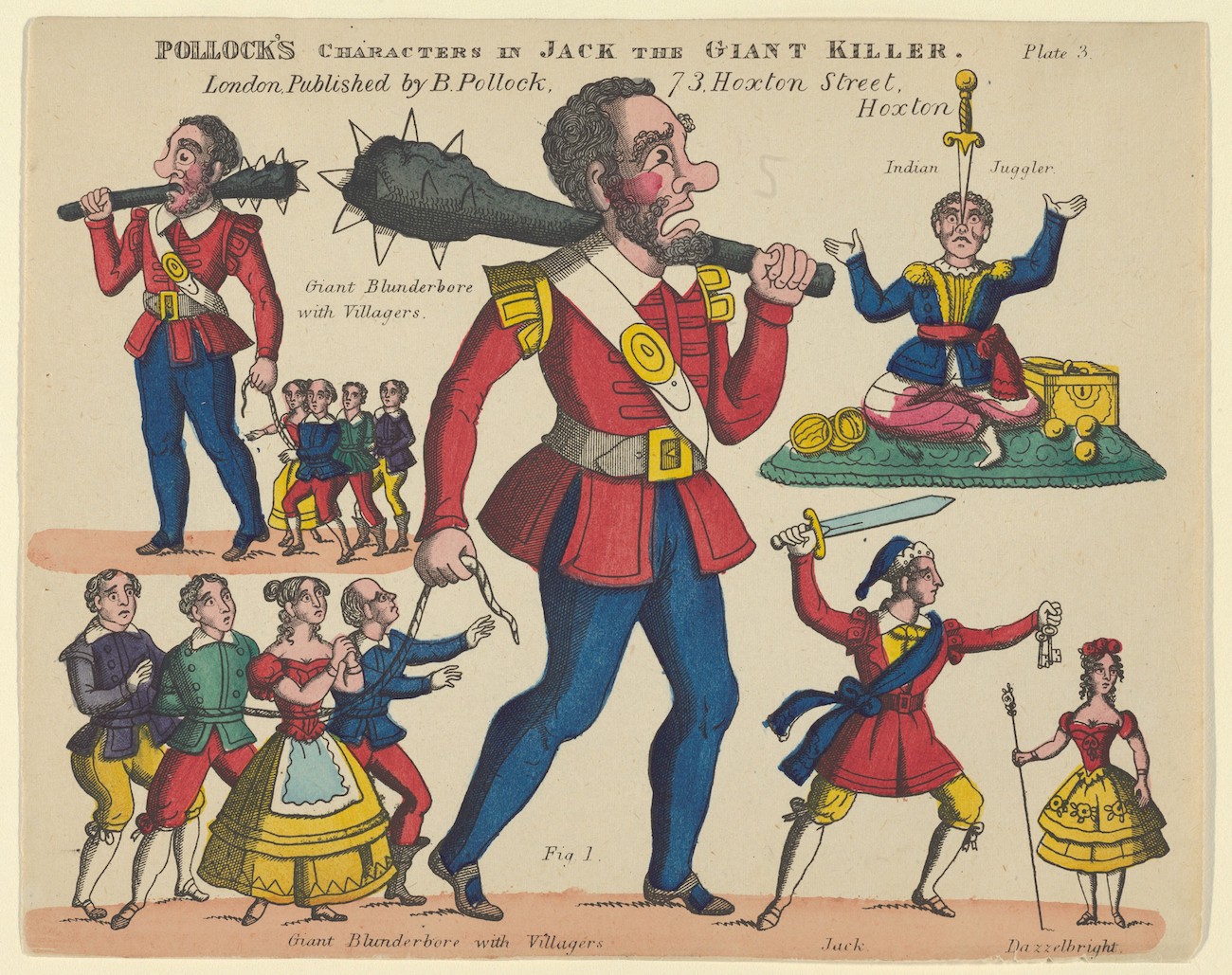
Along the way, Wilkinson provides us some richly detailed passages regarding Arthur’s encounter with the giant of Normandy from the 15th-century telling in The Alliterative Morte Arthure.
On the border between Cornwall and Devon is a site known as “Giant’s Leap,” where another mythic Corineus was said to have killed a giant in the Geoffrey of Monmouth, pseudo-history of Britain, Regum Britanniae. Monmoth’s fable tells of Britain being founded by Brutus of Troy, sent to the island by the goddess Diana, who foretells his victory over the indigenous giants there. The last of these giants to die (as we hear dramatized in a reading from the text by Wilkinson) is hurled from the “Giant’s Leap” by one of Brutus’ soldiers — who happens to be named Corineus. That giant’s name in the text is Gogmagog.
The rest of our story, getting from these two names to the two figures represented at the London Guildhall and Lord Mayor’s Show is a bit complicated. It’s best listened to in the show, where you’ll also hear how the first offspring born on Britain were the product of exiled female criminals from Troy and incubi — another bit of the fable unfolded in Monmoth’s Regum Britanniae.
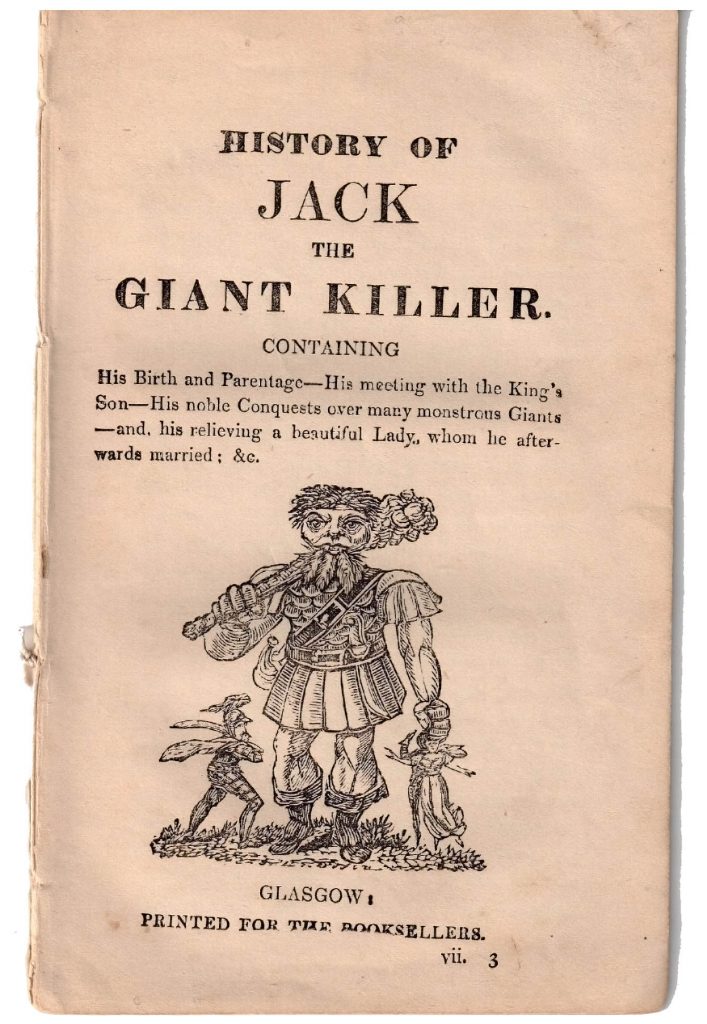
 June Special Offer
June Special Offer